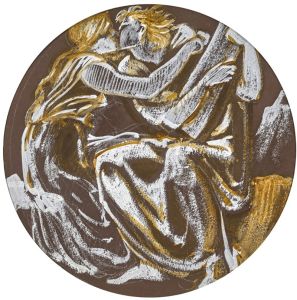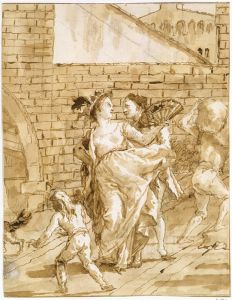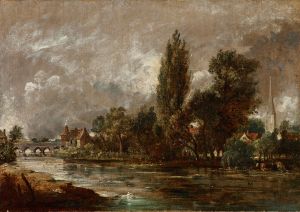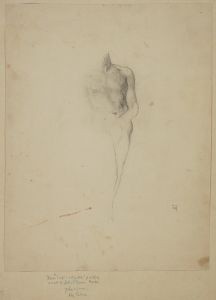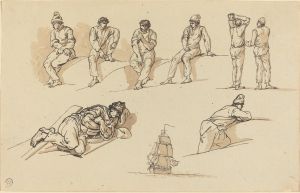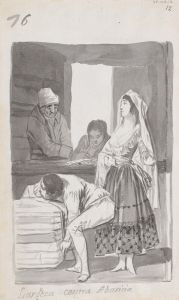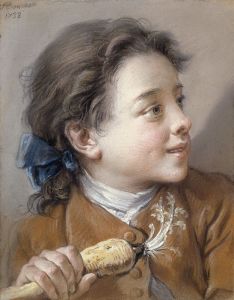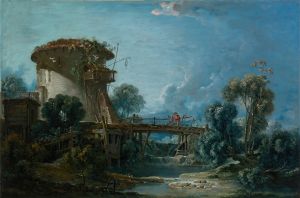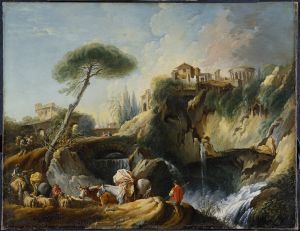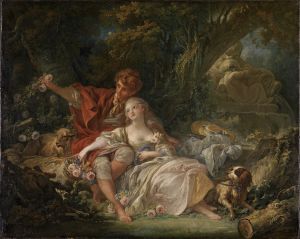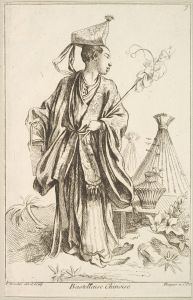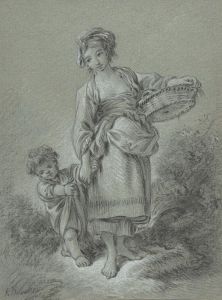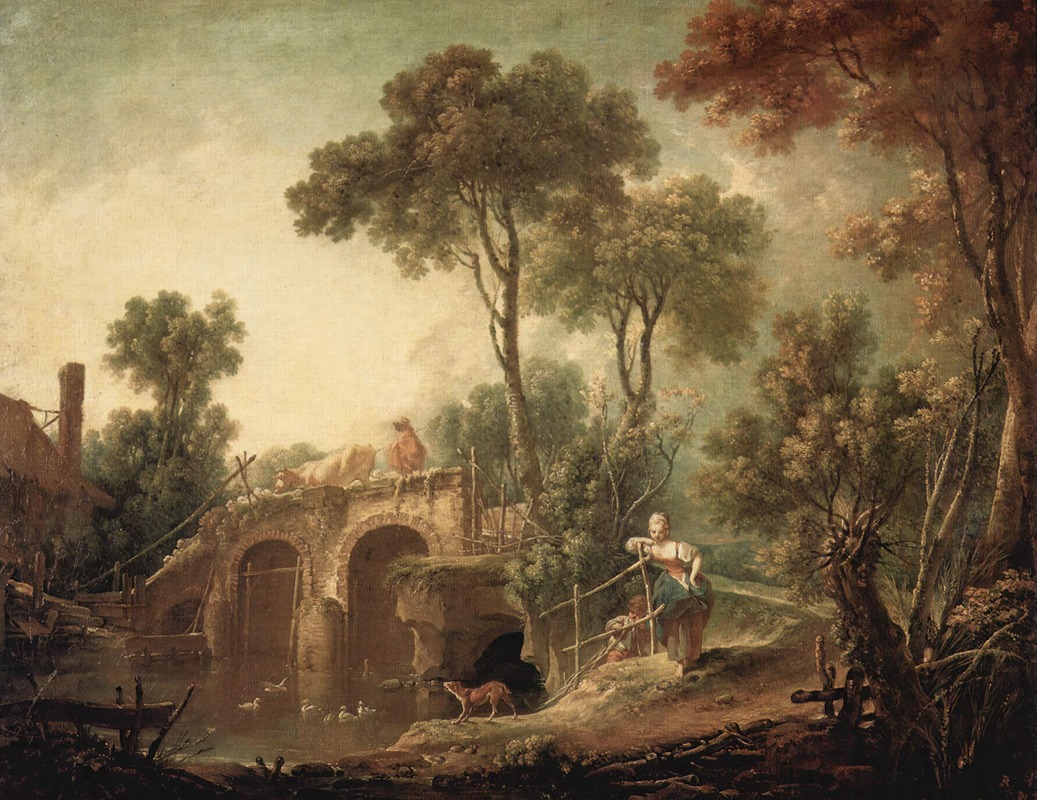
The Bridge
A hand-painted replica of François Boucher’s masterpiece The Bridge, meticulously crafted by professional artists to capture the true essence of the original. Each piece is created with museum-quality canvas and rare mineral pigments, carefully painted by experienced artists with delicate brushstrokes and rich, layered colors to perfectly recreate the texture of the original artwork. Unlike machine-printed reproductions, this hand-painted version brings the painting to life, infused with the artist’s emotions and skill in every stroke. Whether for personal collection or home decoration, it instantly elevates the artistic atmosphere of any space.
François Boucher was a prominent French painter of the Rococo style, known for his idyllic and voluptuous depictions of classical themes, decorative allegories, and pastoral scenes. Born on September 29, 1703, in Paris, Boucher became one of the most celebrated artists of the 18th century, serving as the court painter to Louis XV and a favorite of Madame de Pompadour, the king's mistress.
"The Bridge" is one of Boucher's works that exemplifies his mastery in capturing the playful and ornate qualities of the Rococo movement. While specific details about the painting "The Bridge" are limited, Boucher's oeuvre typically features light-hearted and romanticized scenes, often set in lush, pastoral landscapes. His works are characterized by their soft colors, fluid brushwork, and an emphasis on sensuality and charm.
Boucher's paintings often include mythological subjects, scenes of daily life, and pastoral landscapes that reflect the leisurely pursuits of the aristocracy during the 18th century. His ability to blend fantasy with reality allowed him to create enchanting scenes that appealed to the tastes of the French elite. The Rococo style, with its emphasis on decoration, intimacy, and elegance, is evident in Boucher's work, including "The Bridge."
In his landscapes, Boucher often depicted serene and picturesque settings, incorporating elements such as flowing water, lush greenery, and idyllic skies. These elements create a sense of harmony and tranquility, inviting viewers to escape into a world of beauty and leisure. The inclusion of a bridge in a landscape painting can symbolize a connection or transition, adding a narrative element to the scene.
Boucher's influence extended beyond painting; he also worked in tapestry design, printmaking, and set design, contributing to the decorative arts of his time. His work was instrumental in popularizing the Rococo style across Europe, and his legacy can be seen in the works of later artists who drew inspiration from his approach to color, composition, and subject matter.
Despite the changing tastes in art that followed the Rococo period, Boucher's work remains significant for its technical skill and its embodiment of the cultural and artistic values of 18th-century France. His paintings continue to be celebrated for their beauty and their ability to transport viewers to a world of elegance and fantasy.
While specific information about "The Bridge" by François Boucher is scarce, the painting can be appreciated within the broader context of Boucher's artistic achievements and his contribution to the Rococo movement. His work captures the essence of an era defined by its pursuit of pleasure, beauty, and refinement, making him one of the most enduring figures in the history of French art.





